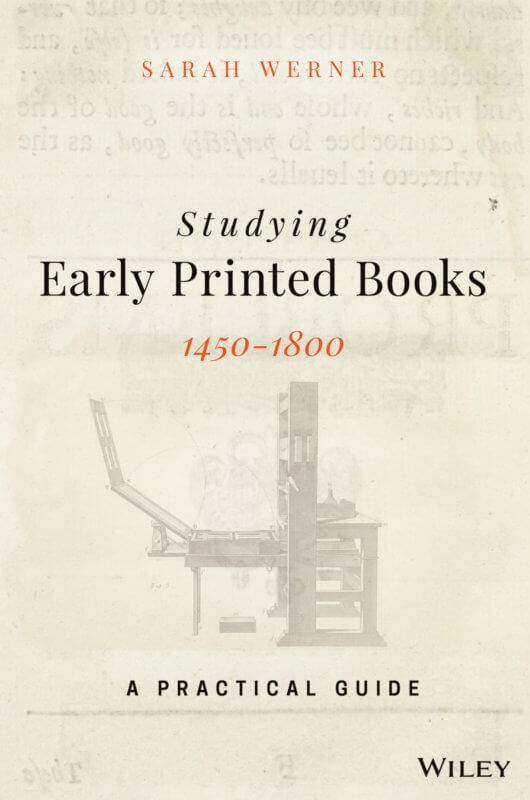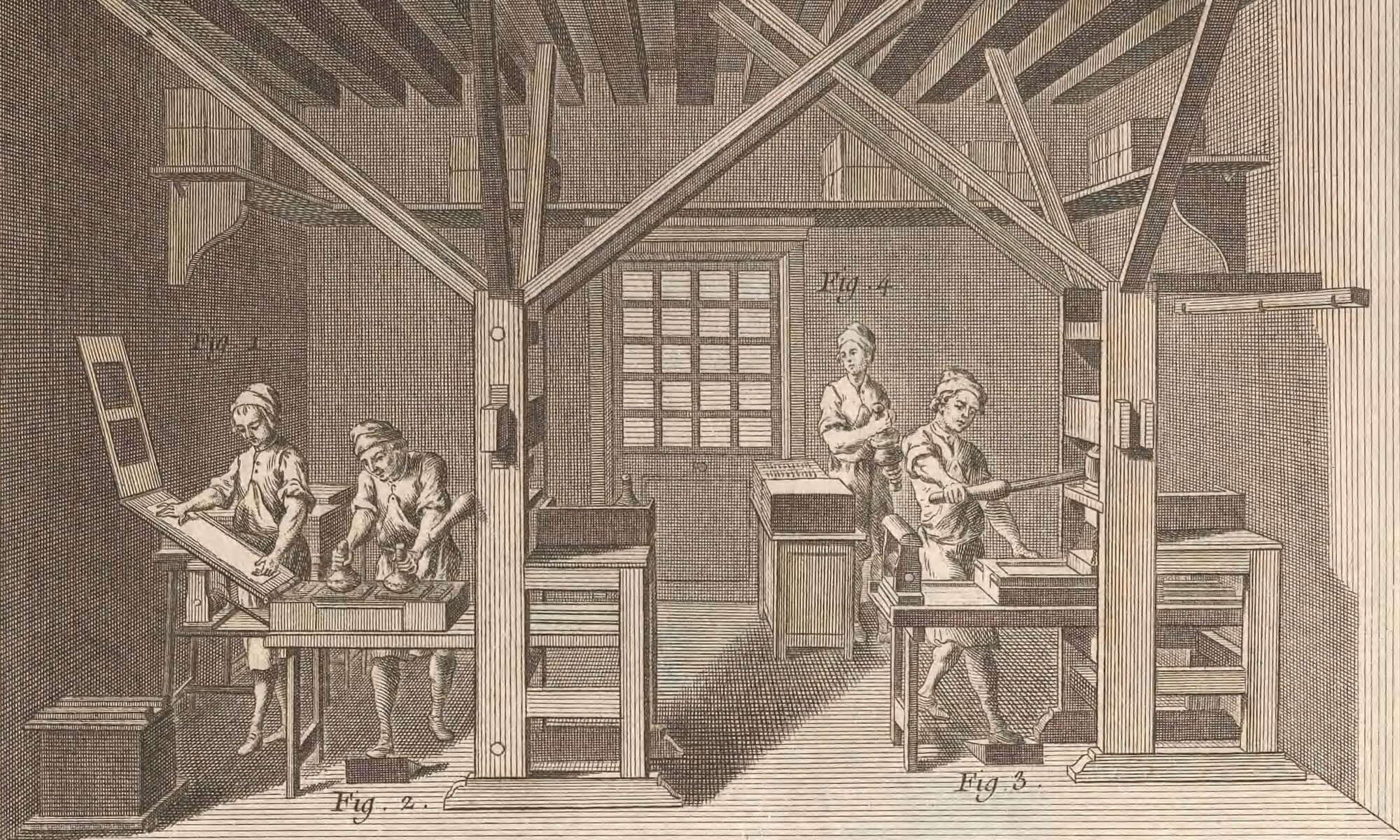 Designed to introduce students, researchers, and librarians to the first centuries of printing, Sarah Werner’s Studying Early Printed Books 1450–1800: A Practical Guide (Wiley 2019) is a clear and accessible introduction to working with books made in the first centuries of the printing press.
Designed to introduce students, researchers, and librarians to the first centuries of printing, Sarah Werner’s Studying Early Printed Books 1450–1800: A Practical Guide (Wiley 2019) is a clear and accessible introduction to working with books made in the first centuries of the printing press.
The first half of the guide describes how books were made in the hand-press period, from making blank sheets of paper through to printed and gathered sheets ready to be sold. The second half guides readers through how to understand and use such books, whether they are encountering them in a library or looking at them on a computer screen. Also including a glossary of helpful terms, an annotated list of additional readings, and plentiful illustrations, Studying Early Printed Books will take readers through everything they need to know to get started and will encourage them in their continuing research.
More information is available on Wiley’s site, where you can also buy it as a paperback (for only $27.95), a hardback, or an ebook; you should also be able to buy the book at any of your favorite retailers in your favorite format.
You can take a peek at the table of contents below or as a pdf, read the introduction, or look through the index.
Table of Contents
- Acknowledgments
- Introduction
- Part 1: Overview
- Getting ready to print
- At the press
- Also at the press
- After printing
- The economics of printing
- Part 2: Step-by-step
- Paper
- Making paper
- Cost of paper
- Why does it matter?
- Type
- Making type
- Typefaces
- Fonts
- Why does it matter?
- Format
- Imposition
- Identifying format
- Why does it matter?
- Printing
- The common press
- Making ready
- Presswork
- Skeleton formes
- Why does it matter?
- Corrections and changes
- Stop-press changes
- Errata lists
- Cancels
- Why does it matter?
- Illustrations
- Woodcuts
- Engravings and etchings
- How to identify a print
- Why does it matter?
- Binding
- Why does it matter?
- Paper
- Part 3: On the page
- Advertisements
- Alphabet and abbreviations
- Blanks
- Dates
- Imprint statements
- Edition, impression, issue, state, copy
- Initial letters
- Marginal notes
- Music
- Pagination and foliation
- Preliminary leaves
- Press figures
- Printer’s devices
- Printer’s ornaments
- Privileges, approbations, and imprimaturs
- Signature marks
- Title pages
- Volvelles and movable figures
- Part 4: Looking at books
- Good research habits
- Handling books
- Appearance
- What is this?
- Size
- Binding
- Paper
- Contents
- Title page
- Colophon
- Navigation
- Categories of text
- Page features
- Headlines
- Signature marks
- Catchwords
- Illustrations
- Leaves
- Usage
- Wear and tear
- Readers’ marks
- Provenance
- Digital Images
- What is this thing?
- Size
- What’s there and what’s not
- Container
- Manufacture
- What is this?
- Part 5: The afterlives of books
- Loss rates
- Catalog records
- Identification: author, title, imprint
- Description: what it looks like, what it’s about
- Holding details: provenance, copy-specific details, shelfmarks
- Union catalogs and shared cataloging
- What’s not in a catalog?
- Collation formulas
- Fingerprints
- Books in hand
- Differentiating between early and later characteristics
- Bindings and endleaves
- Page interventions
- Users’ marks
- Inserting and removing leaves
- Provenance
- Bookplates, labels, and stamps
- Bookseller’s marks
- Library marks
- Differentiating between early and later characteristics
- Books on screen
- Looking at digital objects
- Digital images
- Metadata
- What can you do with digital images?
- How can you find digital images?
- Looking at digital objects
- Conclusion
- Appendix 1: Further Reading
- Appendix 2: Glossary
